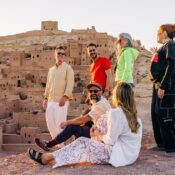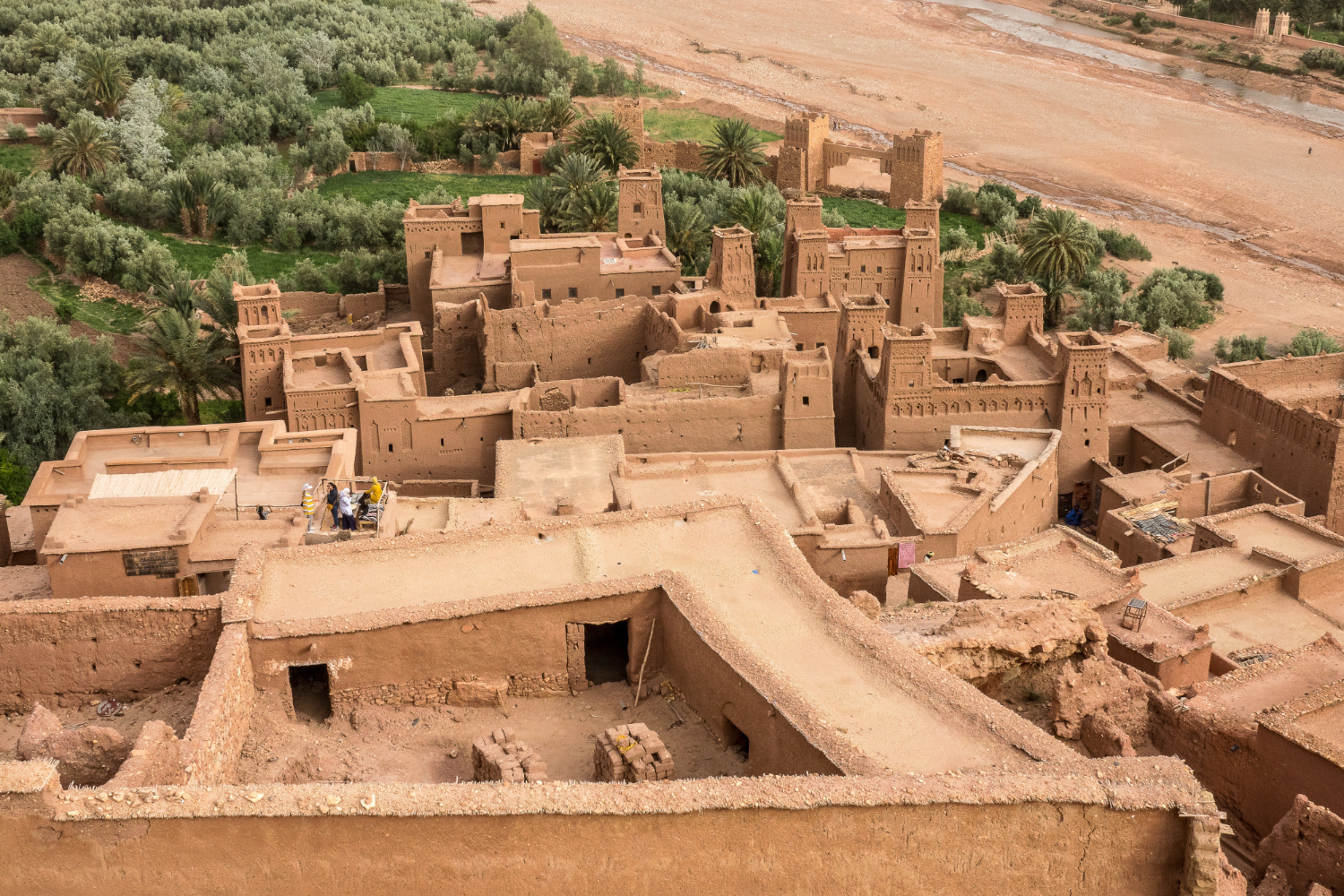
10 must-visit UNESCO world heritage sites in Morocco
Introduction
Morocco, with its rich history and diverse cultural heritage, is home to several UNESCO World Heritage Sites that showcase the country’s unique blend of architecture, craftsmanship, and natural beauty. From ancient cities to breathtaking landscapes, here are 10 must-visit UNESCO World Heritage Sites in Morocco.
Medina of Fez
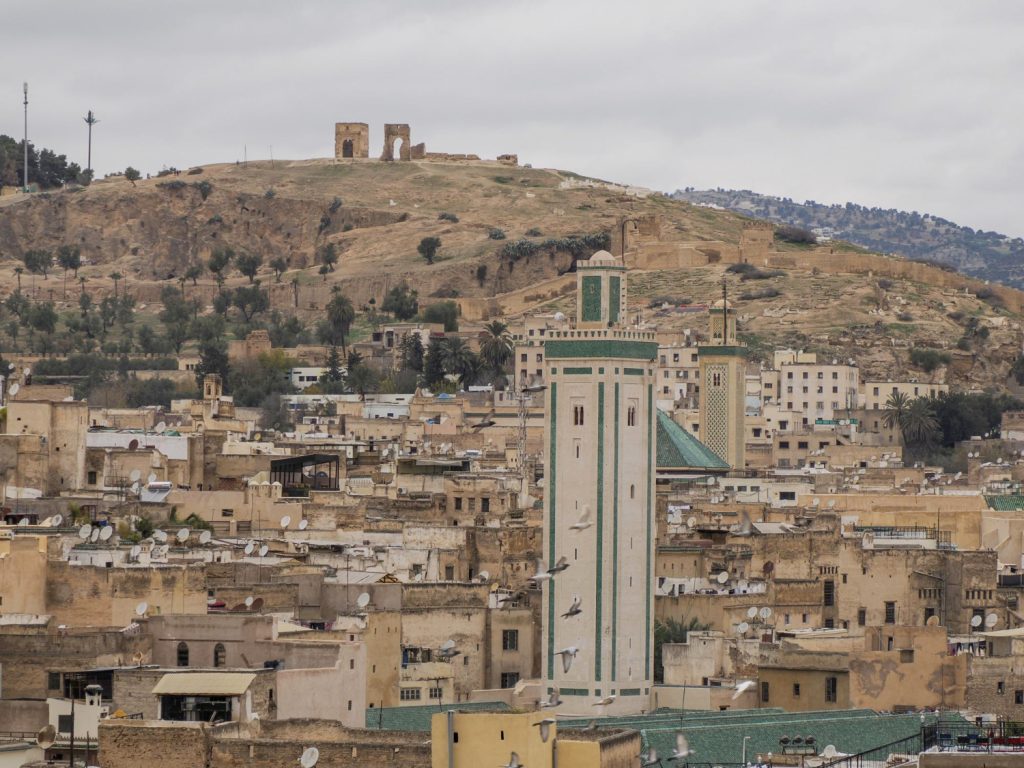
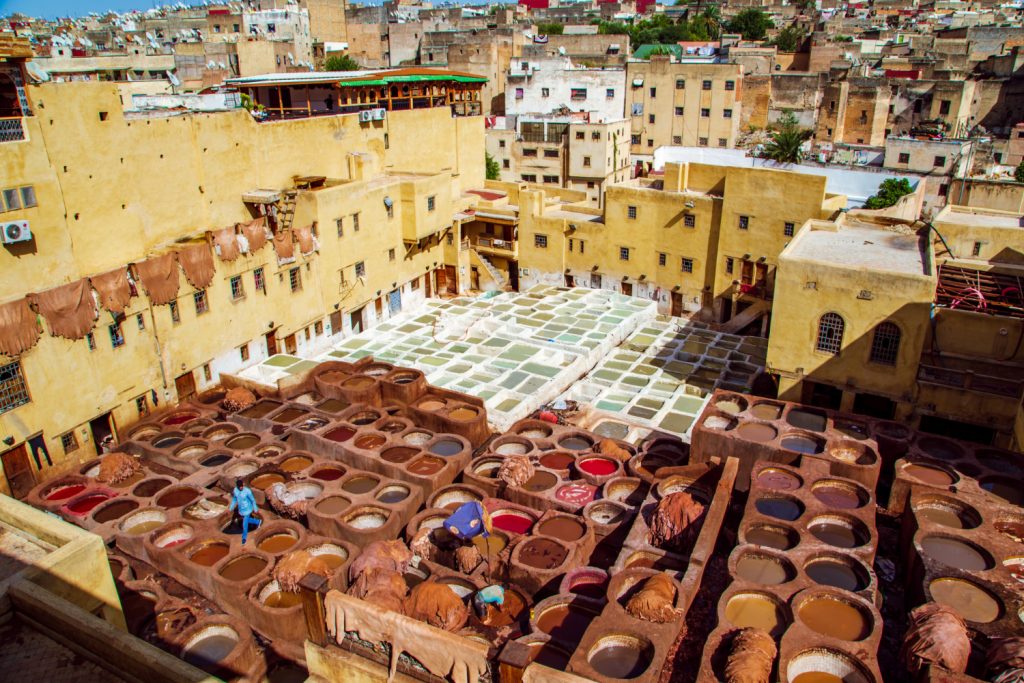
The Medina of Fez, a UNESCO World Heritage Site, encompasses a mesmerizing labyrinth of serpentine alleyways, vibrant souks, and iconic monuments. Dating back to the 9th century, this sprawling medieval city is renowned for its architectural marvels, notably the illustrious Al-Qarawiyyin Mosque, recognized as one of the oldest operating universities globally. Adorning the cityscape is the exquisite Bou Inania Madrasa, an epitome of Moroccan craftsmanship and Islamic artistry. Within these ancient walls, visitors are transported to a bygone era, where every corner holds tales of tradition, culture, and spirituality, making the Medina of Fez an unparalleled destination for immersive historical exploration.
Historic city of Meknes
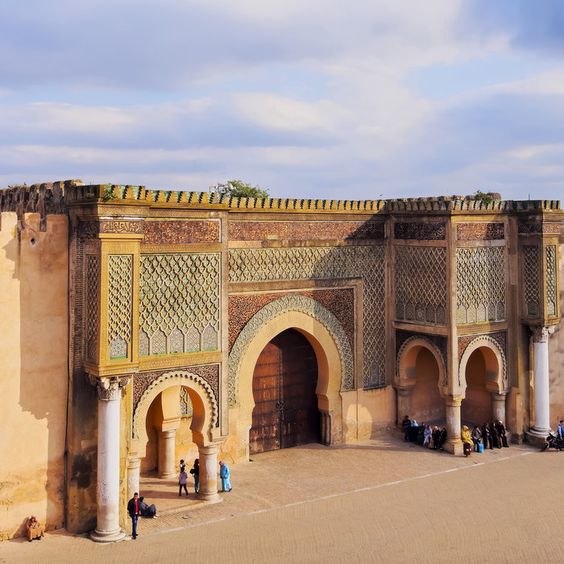
Founded in the 11th century, Meknes flourished as the capital of Morocco under Sultan Moulay Ismail’s reign. The Historic City of Meknes boasts remarkable preservation of its ancient ramparts, elaborate gates, and grandiose palaces, notably the Dar El Makhzen and the Mausoleum of Moulay Ismail. This UNESCO World Heritage Site stands as a testament to the city’s rich history and architectural splendor. Meknes’s significance extends beyond its physical structures; it holds cultural and historical importance, reflecting Morocco’s imperial past and the legacy of its rulers. Visitors are captivated by the city’s enchanting ambiance, offering a glimpse into its illustrious past and cultural heritage.
Medina of Marrakech
Marrakech, the pulsating soul of Morocco, boasts the UNESCO World Heritage Site, the Medina of Marrakech. Enclosed within ancient walls, this vibrant city is renowned for its lively souks, where artisans peddle their wares amid a symphony of colors and scents. The Medina also houses historic marvels such as the opulent Bahia Palace, showcasing intricate Islamic architecture, and the majestic ruins of the El Badi Palace, once a symbol of grandeur. Dominating the skyline is the iconic Koutoubia Mosque, its towering minaret a testament to Moorish craftsmanship. Together, these landmarks weave a tapestry of culture and history that mesmerizes visitors from around the globe.
Archaeological site of Volubilis
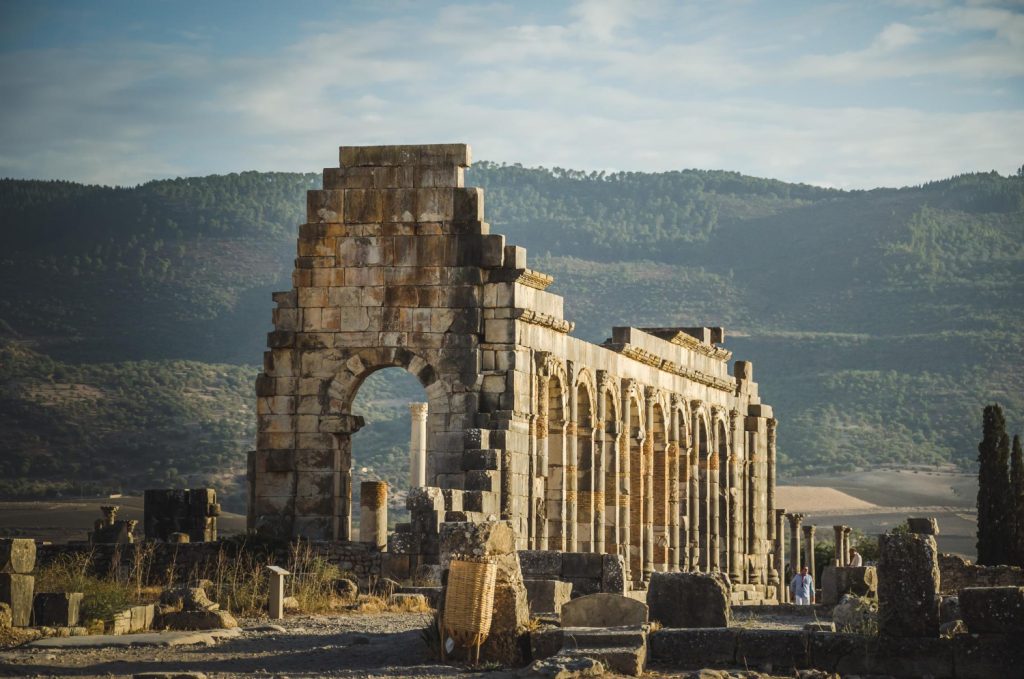
Nestled close to Meknes, the Archaeological Site of Volubilis epitomizes Morocco’s rich Roman heritage. Established around the 3rd century BC, Volubilis showcases impeccably conserved remnants, offering a glimpse into its opulent past. The site features majestic villas adorned with intricate mosaics that depict scenes of daily life and mythological tales. Among its notable ruins stands the remnants of a basilica, reflecting the architectural grandeur of its era. Volubilis serves as a historical treasure trove, inviting visitors to unravel the mysteries of its ancient civilization and marvel at the enduring legacy of Roman influence in North Africa.
Medina of Tetouan
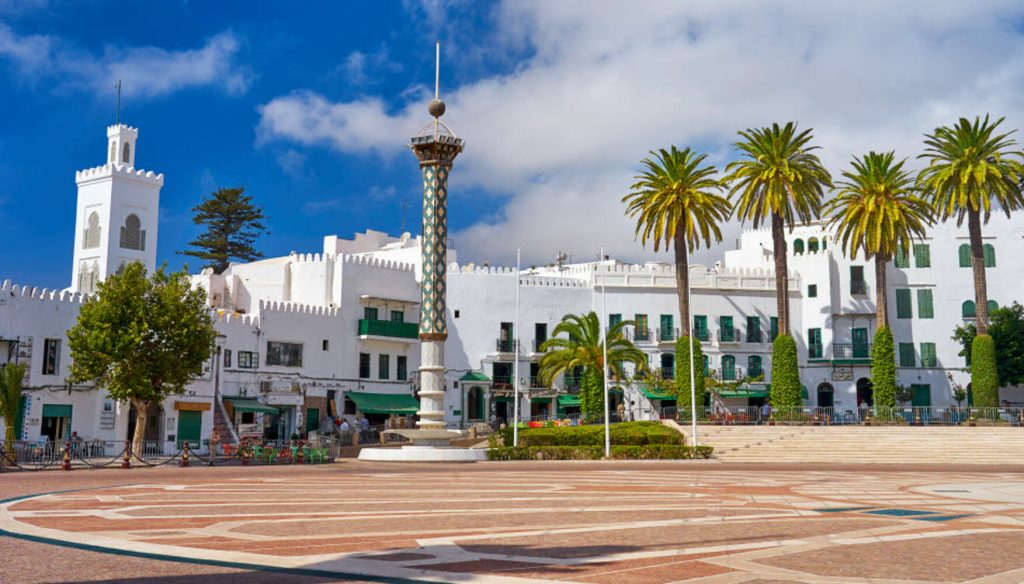
Nestled within the picturesque Rif Mountains, the enchanting Medina of Tetouan beckons with its captivating blend of Andalusian-inspired architecture and rich cultural tapestry. This historic gem invites visitors to meander through its labyrinthine streets, offering glimpses of traditional hammams where locals gather for relaxation and rejuvenation. Intricately adorned with mesmerizing woodwork and exquisite tile motifs, the city’s historic edifices stand as timeless testaments to its storied past. As visitors wander, they’re enveloped in the vibrant atmosphere, where echoes of Tetouan’s cultural heritage resonate around every corner, making it a truly unforgettable destination for those seeking to immerse themselves in Morocco’s captivating charm.
Medina of Essaouira
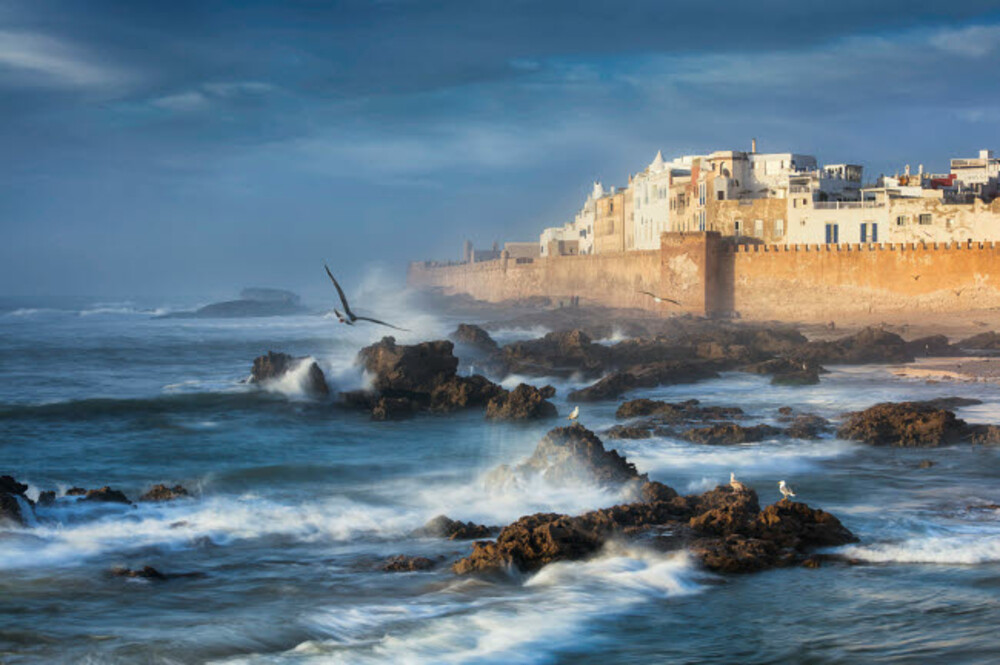
Nestled along Morocco’s Atlantic coastline lies Essaouira, a captivating coastal town boasting the enchanting Medina of Essaouira. Recognized by UNESCO, this historic gem is celebrated for its immaculate fortifications, lively harbor, and iconic blue-and-white structures, which have provided a cinematic setting for various movies and television series. The Medina exudes an old-world charm, with its maze-like alleys leading to vibrant markets filled with local crafts and culinary delights. Visitors can immerse themselves in the rich cultural tapestry of Essaouira, exploring its intriguing history, indulging in fresh seafood delicacies, and relishing the laid-back ambiance that permeates this picturesque Moroccan gem.
Portuguese city of Mazagan
El Jadida, previously named Mazagan, stands proudly as a coastal gem, encapsulating Morocco’s rich Portuguese legacy. The remnants of its past glory are evident in the meticulously preserved fortifications within the Portuguese City of Mazagan. Among these architectural marvels, the Cistern commands attention with its imposing presence, while the Bastion of the Angel offers breathtaking vistas of the boundless Atlantic Ocean. These historic landmarks not only serve as tangible links to a bygone era but also beckon visitors to delve into the captivating tales of conquest and cultural exchange that define the region’s vibrant history. El Jadida stands as a testament to the enduring fusion of diverse influences shaping Morocco’s identity.
Ksar of Ait-Ben-Haddou
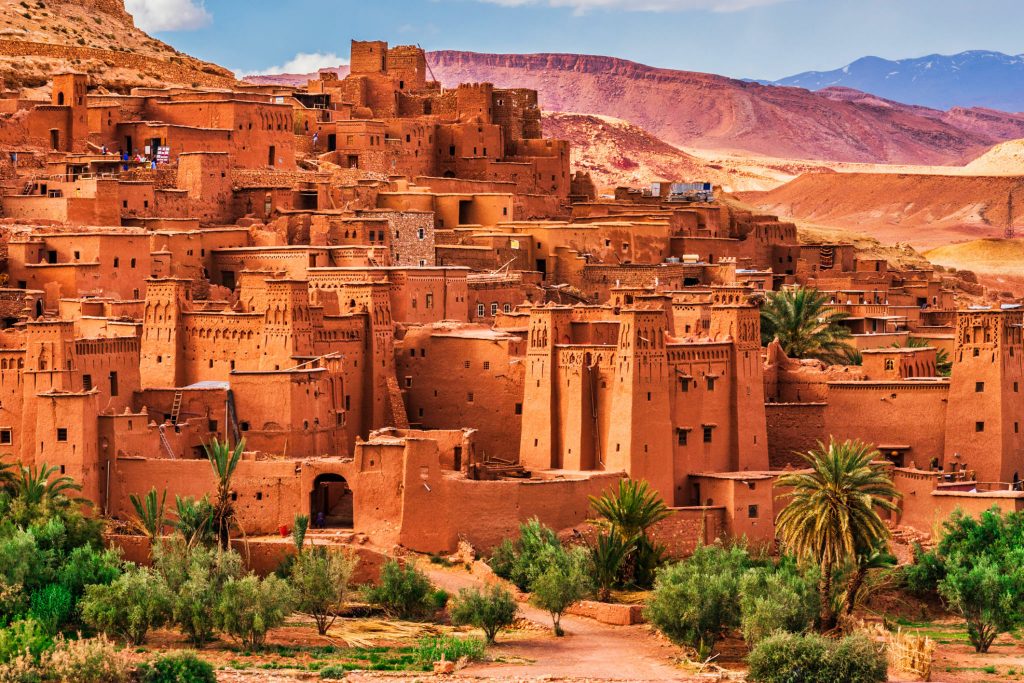
Nestled majestically on a hill, commanding a panoramic vista of the Ouarzazate Valley, stands the historic Ksar of Ait-Ben-Haddou. This fortified village, a UNESCO World Heritage Site, epitomizes enduring beauty and resilience. Its architectural marvels, characterized by intricate mud-brick dwellings and formidable towers, evoke a sense of timeless charm. Notably, this ancient citadel has served as a backdrop for countless cinematic masterpieces, enriching its allure with a touch of cinematic fame. Each edifice within its walls whispers tales of bygone eras, inviting visitors to immerse themselves in its rich history and cultural significance. The Ksar of Ait-Ben-Haddou stands as a testament to human ingenuity and perseverance through the ages.
Medina of Tétouan
Tétouan, nestled in northern Morocco, is famed for its impeccably maintained Medina, designated a UNESCO World Heritage Site. The Medina of Tétouan showcases an exquisite fusion of Moorish and Andalusian architectural styles, characterized by winding alleys, vibrant marketplaces, and intricately adorned mosques, all emblematic of its diverse cultural legacy. Its labyrinthine streets evoke a sense of timeless charm, inviting visitors to explore its rich tapestry of history and tradition. From the bustling souks filled with a kaleidoscope of colors to the serene beauty of its mosques, Tétouan captivates with its enchanting ambiance, offering a glimpse into the soul of Moroccan heritage and craftsmanship.
Rabat, modern capital and historic city
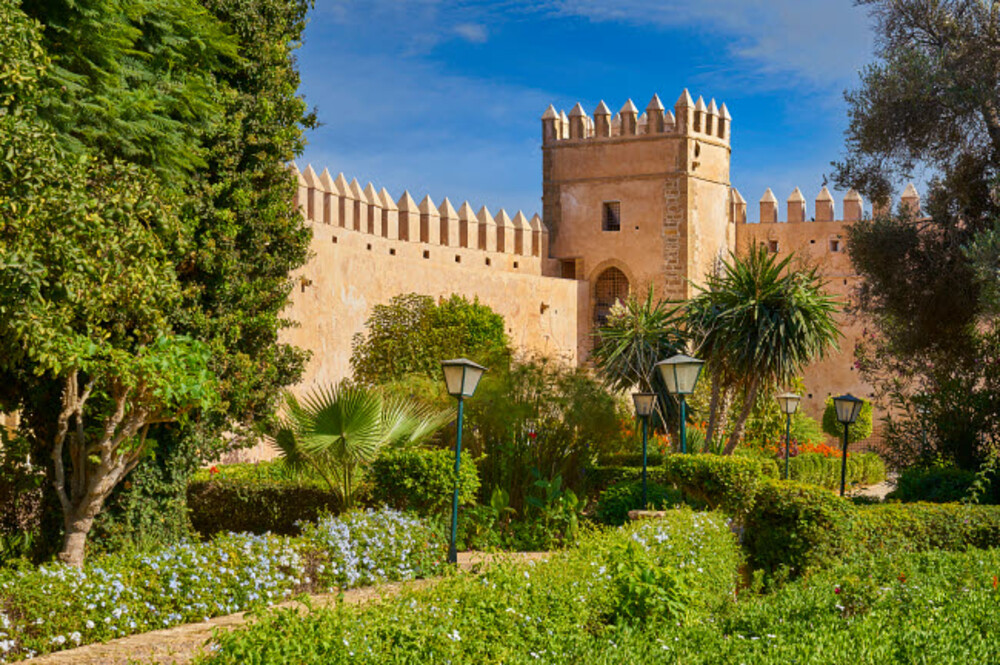
Rabat, the capital of Morocco, embodies a captivating blend of old-world charm and modern vitality. This dynamic city juxtaposes its ancient heritage with contemporary marvels, offering visitors a rich tapestry of experiences. Its historic quarter, recognized as a UNESCO World Heritage Site, boasts iconic landmarks like the Kasbah of the Udayas, the majestic Hassan Tower, and the revered Royal Mausoleum of Mohammed V. These architectural gems stand as testaments to Rabat’s rich cultural legacy. Meanwhile, the city’s modern skyline and bustling streets pulsate with energy, reflecting its vibrant cultural scene. In Rabat, tradition and innovation harmoniously coexist, creating an enchanting destination that enchants all who wander its streets.µ
Conclusion
From ancient medinas to ancient ruins, Morocco’s UNESCO World Heritage Sites offer a glimpse into the country’s rich and diverse heritage. Whether you’re exploring bustling souks, admiring intricate architecture, or soaking in breathtaking landscapes, these cultural treasures are sure to leave a lasting impression on every visitor.
FAQs
- What is a UNESCO World Heritage Site?
- A UNESCO World Heritage Site is a place of cultural, historical, or natural significance that has been recognized by the United Nations Educational, Scientific and Cultural Organization (UNESCO) for its outstanding universal value and is protected for future generations.
- How many UNESCO World Heritage Sites are there in Morocco?
- Morocco is home to nine UNESCO World Heritage Sites, each offering unique insights into the country’s rich cultural heritage and natural beauty.
- Are Morocco’s UNESCO World Heritage Sites open to the public?
- Yes, most of Morocco’s UNESCO World Heritage Sites are open to the public for exploration and visits. However, it’s essential to check for any entry fees, opening hours, and COVID-19-related restrictions before planning your visit.
- What are some safety tips for visiting Morocco’s UNESCO World Heritage Sites?
- While Morocco’s UNESCO World Heritage Sites are generally safe to visit, it’s essential to exercise caution and be mindful of your surroundings, especially in crowded areas. It’s advisable to stay hydrated, protect yourself from the sun, and be respectful of local customs and traditions.
- Which UNESCO World Heritage Site is the most popular in Morocco?
- The Medina of Marrakech is arguably the most popular UNESCO World Heritage Site in Morocco, attracting millions of visitors each year with its vibrant atmosphere, historic landmarks, and cultural significance.

